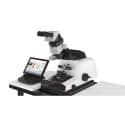Image Larger Volumes with the UltraMicroscope Choros™
Imaging large biological samples, such as whole organs or even whole organisms, usually requires sample sectioning and tedious image stitching….
Join Us
Sign up for our feature-packed newsletter today to ensure you get the latest expert help and advice to level up your lab work.
Search below to delve into the Bitesize Bio archive. Here, you’ll find over two decades of the best articles, live events, podcasts, and resources, created by real experts and passionate mentors, to help you improve as a bioscientist. Whether you’re looking to learn something new or dig deep into a topic, you’ll find trustworthy, human-crafted content that’s ready to inspire and guide you.
Imaging large biological samples, such as whole organs or even whole organisms, usually requires sample sectioning and tedious image stitching….
Tracking nucleic acid and protein concentration is a fundamental yet repetitive task, particularly for high-throughput workflows. The DeNovix DS-8X Eight…
Did you know a research lab of seven scientists can produce as much as 97 kg of plastic waste in…
DNA released from cells into the bloodstream can be a valuable marker. However, DNA collection and stabilization from blood sources…

What it is: A benchtop robotic pipetting system designed to bring high-end automation to ordinary labs without a six-figure invoice…
The way individual cells respond to treatment can be directly observed down the microscope by imaging and tracking single cells…
Introducing the Zymo-Seq RiboFree® Total RNA Library Kit Building up a library of RNA sequences is an excellent way to…
The plasmid midi and maxi preps are essential for generating high-purity plasmid stocks for your precious experiments. Unfortunately, they are…

The eBook with top tips from our Researcher community.